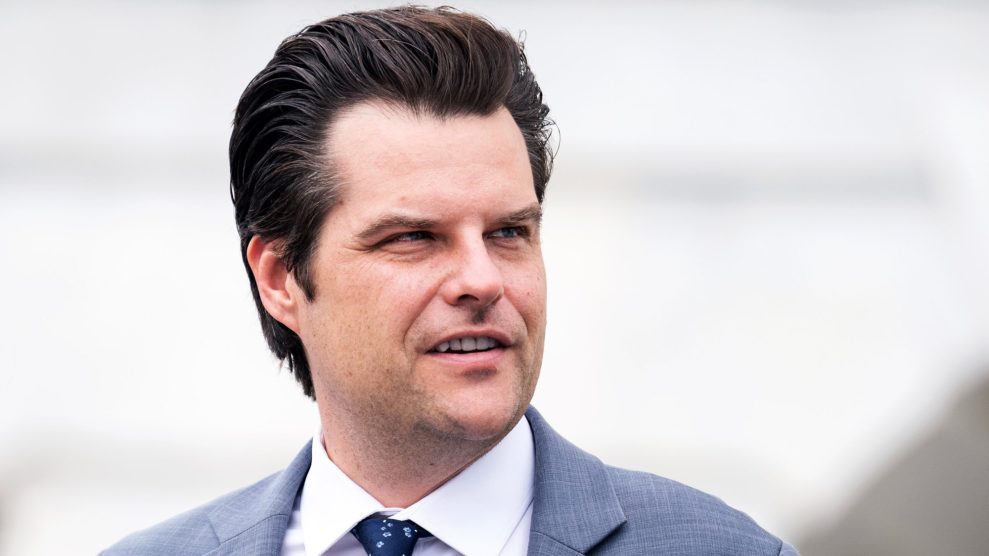Americans shell out close to $2.4 billion on diet-related foods each year, so it was with great fanfare that Procter & Gamble trumpeted the Food and Drug Administration’s January 1996 approval of olestra. Since then, snack foods made with the “fat substitute” have debuted in five test markets, but they carry a label required by the FDA that warns that olestra (or Olean, P&G’s brand name) “may cause abdominal cramping and loose stools” and “inhibits the absorption of some vitamins and other nutrients.”
P&G says it would like the FDA to let it soften the unsettling label when the agency revisits olestra’s approval by 1998, so when the products are later sold nationwide, the public won’t think olestra is anything other than the “breakthrough, calorie-free fat replacer that tastes great” that P&G claims it is.
But dropping the label might not be so easy. In late February, the Center for Science in the Public Interest — which had opposed olestra’s FDA approval — released findings from a confidential study by Frito-Lay (which is testing its own olestra-based snack food line, Wow!) that reported olestra caused “anal oil leakage” in 3 to 9 percent of its product testers. The report also cited incidences of underwear spotting (5 percent in one test group) and a “greater variety of gastrointestinal changes” than normal (7 percent). This confirmed earlier CSPI reports from consumers who claimed olestra caused a range of digestive problems.
And that’s not the worst of it. Scientists, such as Meir Stampfer of the Harvard School of Public Health, say consumption of olestra may make it difficult for the body to absorb the fat-soluble vitamins A, D, E, and K, and could deplete carotenoids, important nutrients that are believed to reduce the risk of cancer, heart disease, and other chronic ailments.
In order to combat this spate of bad news, P&G has mounted an impressive public relations campaign to try to make olestra easier for the public — and the government — to stomach:
Working With the FDA According to Henry Blackburn of the University of Minnesota School of Public Health, one of five FDA panel members who voted against olestra’s approval, “The FDA did not conduct a disinterested peer review. The FDA staff worked closely with P&G and acted as proponents of the company’s petition.” Of the 17 FDA panelists who voted to approve olestra, nine have links to companies that could benefit from its approval. These include Bruce Chassy of the University of Illinois, whose department’s research has been funded by Nestlé and Dean Foods; John Doull of the University of Kansas Medical Center, who has worked for Pillsbury and Best Foods; and David Lineback, a consultant whose client list has included P&G.
Supporting Stealth Advocates Several high-profile scientific experts have publicly touted olestra without disclosing that they or their organizations receive funding from P&G. For example, Elizabeth Whelan of the American Council on Science and Health wrote a January 28, 1996, syndicated column calling the FDA’s decision to approve olestra “both tasty and satisfying.” She added: “Within months we will be able to buy a variety of delectable zero-fat snacks — a real-life case of getting something for (almost) nothing.” Whelan failed to mention that her group receives funding from P&G — at least $22,500 since 1995. (Whelan says P&G’s support represents less than 1 percent of her group’s budget.)
Louis Sullivan, a former secretary of Health and Human Services, which oversees the FDA, has addressed press conferences and written letters to the editor on behalf of olestra. Rarely is it noted that he also works as a paid P&G consultant. In one dispatch to the New York Times, Sullivan — identified only as the president of the Morehouse School of Medicine — said, “Americans can feel confident in the safety of snacks made with olestra.”
Sullivan also promoted olestra in a 10-minute video P&G sent to local groups, such as PTAs, as part of its marketing effort in Columbus, Ohio. Accompanying the video was a “fact sheet” from the American Dietetic Association that was virtually identical to P&G’s own handouts — no real surprise, since P&G (which provides significant funding to the ADA) paid for the fact sheet.
Courting Congress In order to line up support in Washington, P&G’s political action committee contributed more than $300,000 to congressional races in the last election cycle. P&G, based in Cincinnati, has received particular support from five members of Ohio’s delegation, four of whom received money from P&G’s PAC. In February 1995, Sens. John Glenn and Michael DeWine and Reps. John Boehner, Steve Chabot, and Rob Portman (who doesn’t accept PAC money but took contributions from P&G executives) wrote a joint letter to Health and Human Services Secretary Donna Shalala to argue that olestra is safe.
Hitting the Opposition In the past year several articles critical of olestra’s leading critic, the Center for Science in the Public Interest, have been written by authors whose organizations receive P&G funding. In July 1996, for example, Henry Miller of the Hoover Institution, a think tank that gets money from P&G, attacked the center’s position on olestra in the Wall Street Journal. A month later, Norman Ornstein of the American Enterprise Institute — which received $140,000 last year from P&G — penned a similar article for USA Today. Neither Miller nor Ornstein disclosed the conflict.
Paying for Science P&G’s funding of scientific research creates a significant conflict of interest between the company’s aims and those of objective science. For instance, at a conference on fat substitutes sponsored by the prestigious New York Academy of Sciences last fall, two P&G consultants, Penny Kris-Etherton of Penn State and John Foreyt of the Baylor College of Medicine, were speakers, as was John Peters, P&G’s associate director of regulatory and clinical development. The conference was co-sponsored by the International Life Sciences Institute, which includes P&G on its board of directors. P&G also helped fund the conference, though ILSI won’t disclose the amount.
The Annals of the New York Academy of Sciences will publish the conference proceedings this May. Printed as a bound volume and distributed to more than 700 libraries, the annals, according to the academy, “are among the oldest and most frequently cited sources of scientific research.”
P&G argues that the fees it pays scientific consultants are modest — William Klish of the Baylor College of Medicine, for example, says he’s received $10,000 over five years — and unlikely to influence scientific outcomes. “These are known academics and health researchers who have built reputations for sound science over their careers,” says P&G spokeswoman Jacqui d’Eon. “They are not going to be bought.”
John Stauber, editor of PR Watch, disagrees: “[P&G consultants] are carefully selected and can be counted on to promote the official line. There’s nothing objective or independent about them.”
















